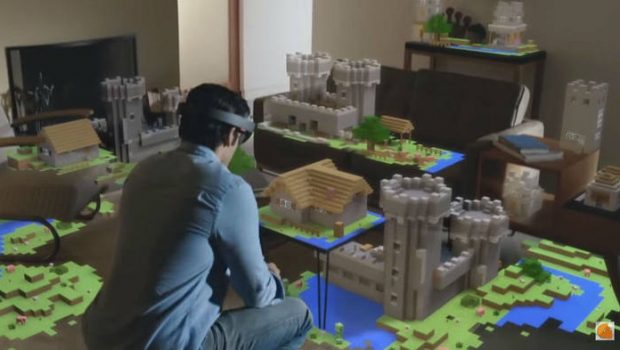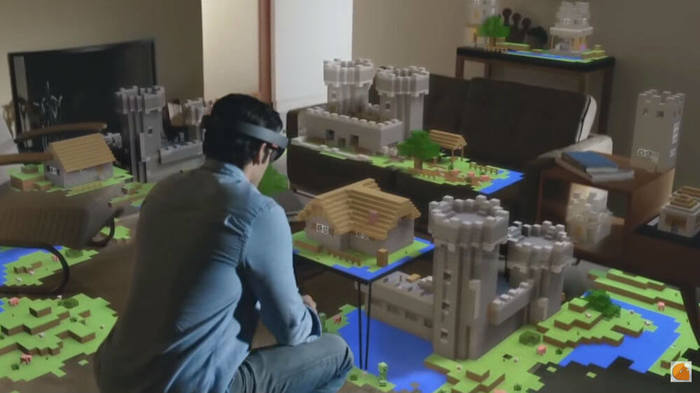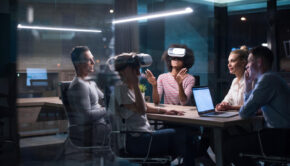How Mixed Reality Is Becoming the Next Big Thing in the Tech World
Mixed reality (MR) is an umbrella term that has “real and Virtual Reality (VR), encompassing Augmented Reality (AR) and augmented virtuality via immersive technology.” All set to become a $165 billion dollar industry by 2020, tech-biggies including Microsoft, Apple and Facebook have their hopes pinned to mixed reality.
As Tom Mainelli, Program Vice President, Devices & AR/VR puts it, “The rise of new, less expensive hardware will put virtual and augmented reality technology within the grasp of a growing numbers of companies and individuals. But, as always, what people can do with that hardware will depend upon the applications and services that power it. In the coming years, we expect developers to create a wide range of new experiences for these devices that will fundamentally change the way many of us do work.”
The Magic Called Mixed Reality
Mixed reality scans the physical environment and creates a 3D map of its surroundings. A device made or altered especially for this purpose will then know and place digital content in that space using advanced technology. The hybrid technology also offers a wide range of tools that help developers create cutting-edge products.
The use of advanced sensors, optics and highest computing capacities fit into a single device, which disrupts the way we see and interact with the amalgamation of the real and the virtual world. Ergo, it mirrors reality and allows users to interact with the content using various gestures.
As opposed to VR, where the user is immersed in the digital world, MR allows real-time interaction in the real world with a digital twist. It is more believable and rooted in the real-world than VR or AR is, and is a promising medium that completely immerses users. The believability factor at the core of MR takes it several notches higher. This is why the interactions and experiences that come with an MR device or app are beyond your imagination.
The contest is heating up as the rapidly growing technology has numerous takers. Here’s the lowdown on how MR is taking immersive digital content to the next level:
Project Alloy – Intel’s Project Alloy is a wireless VR headset and an eagerly awaited MR project. It lets users see their immediate surroundings with smart sensors and cameras. Go untethered, get an immersive experience with RealSense or make your own products when Intel opens the Alloy hardware and provides open APIs.
View Mixed Reality – Microsoft is also in the MR race with its new VR/MR hybrids. To begin with, it announced View Mixed Reality, which will allow any individual to “dynamically insert 3D imagery into a real-time video input” from say, a webcam. This will be a breakthrough in the field of education as educators will be able to use it to offer visual context to the lessons taught. The capability of this new technology was demonstrated with NASA’s Curiosity Rover as an example.
Scheduled to arrive this fall, View Mixed Reality will work on any device with Windows 10 OS and any RGB camera.
HoloLens – Another offering from Microsoft, HoloLens lets users seamlessly switch between modes with a single press of a button on their device. It’s currently working with the NFL to change the way fans can interact with their favorite players and watch them play in real-time. It also makes it possible for them to interact with fellow fans, advertisers, and sponsors like never before. It’s going to make its debut at the San Diego Comic-Con, courtesy Legion.
Tango – Google’s take on mixed reality is an intriguing one. Its project Tango lets users see more of their world simply by holding their smartphones up. It lets them avail a richer, deeper experience so that they can engage with, explore and enjoy it to their heart’s content. For instance, they can play a wide range of immersive games or explore museums, exhibitions and other locations with the directions overlaid.
As of now, it is available to users of Lenovo Phab 2 Pro and Asus ZenFone AR. Several apps are already featured by Tango and available for download on Google Play.
Meta – The Meta 2 Development Kit is based on neuroscience-driven interface design principles. It brings to the table the widest (90-degrees) field of view and offers intuitive access to digital information. Its direct hand interaction with holograms and 2560 x 1440 high-dpi display are equally fascinating. For those who wear spectacles, the good news is that they can use the headset even with their glasses on.
Magic Leap – With the backing of industry giants like Google and Qualcomm, Magic Leap is a company to watch out for. The world’s most secretive startup aims to build a device, which interfaces perfectly with the human brain and creates a transparent display. This surely piques our interest!
What sets Magic Leap apart from its competitors is that it can replicate the real life phenomenon of projecting light into a human retina via a digital light field and there’s no way of distinguishing it from nature as all the images are pixel-free. Way to go!
Vrtify – Vrtify is the first-of-its-kind VR and MR music library. It is reinventing the music streaming space by providing music aficionados with the opportunity to sit in front rows of concerts and recitals from any corner of the world and feel the music in person (well, kind of) through a process called Telepresence or Holoportation! They claim to “make music happen in every immersive technology.”
Want to test it? You can get the first beat version of the app on Google Play.
Etho – US-based Etho is developing MR helmets for motorcyclists, which also finds other uses. It integrates a certain number of devices through the helmets and controls them using voice. A transparent OLED display within the helmet will display essential information to the users.
Surreal Vision – Social media giant Facebook too seems keen to embrace mixed reality real soon, a move that’s obvious from its acquisition of British start-up, Surreal Vision. The firm recreates real-world scenarios and allows users to interact in the computerized version, which is so convincing that it becomes difficult to differentiate the virtual from the real.
iPhone 8 – Robert Scoble reported that Apple is readying a completely transparent mobile device, and that it’s got more than 600 engineers in Israel to work on the 3D sensor of the device, which can be connected to a headset. This hints at an MR-capable iPhone 8 that launches in the Fall of 2017!
Here’s to the Future
While these projects and technologies hint at a significant move towards a future that includes MR in every possible sphere, mass-consumer adoption will take place only when the devices are smaller and affordable. The HoloLens comes with a price tag of $3000, while Meta 2 (though comparatively cheaper) costs a whopping $949. That’s more than the price of the latest iPhone model! Cheaper alternatives like ZapBox and HoloKit can be considered, but we’ll need more of these to accommodate the rapidly developing technology and apps.
About Author:
I’m Rachel Oliver, I have been working for the past couple of years as a content writer. While I like to write about all things under the sun, including gadgets, technology, and electronics. Currently, I am pursuing this passion by working with ismolex & sconect. You can get in touch with me on Google+, Facebook and Twitter.
















